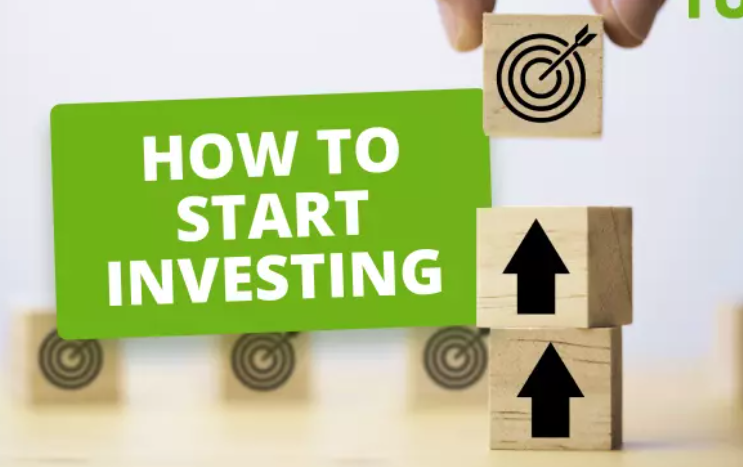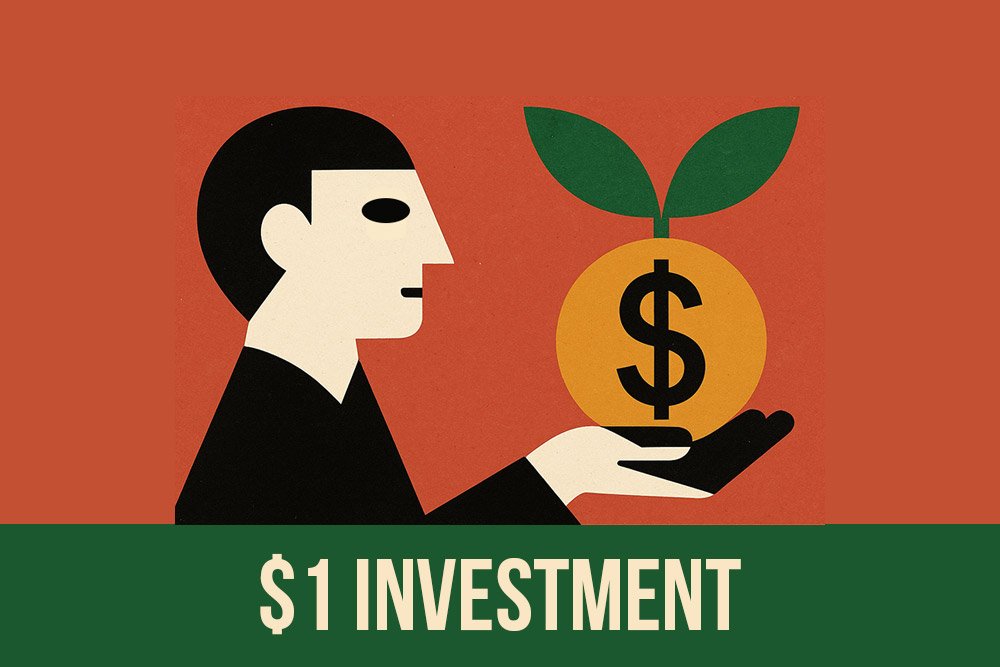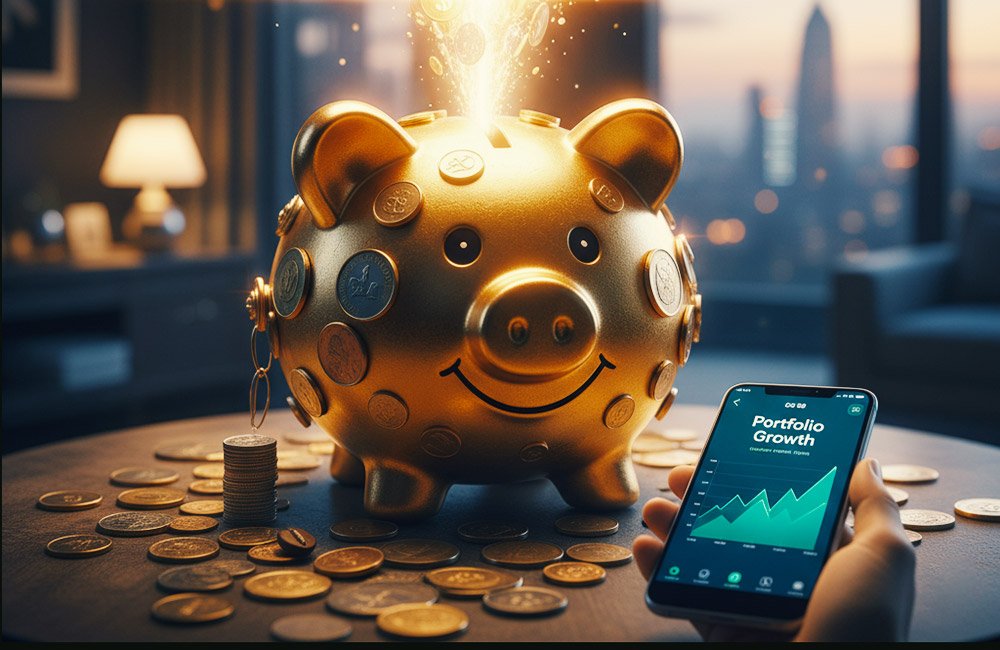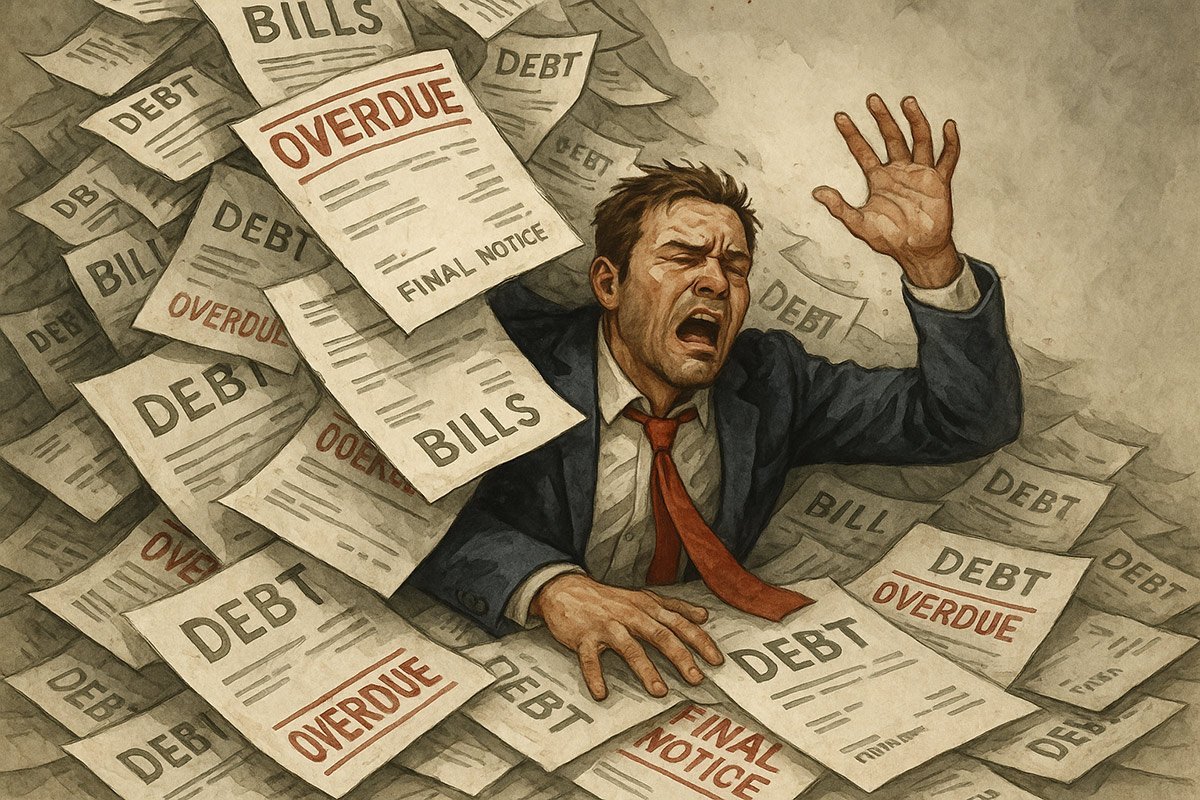Table of Contents
Money is influential even if it is just a dollar. Some people assume that investing is not meant for the poor. That investing is only for the rich folks who can throw in thousands of dollars into the stock market without prior notice. The truth is, you can start investing with one dollar and create wealth in your life with it. The ordinary barriers that were perceived to keep off the majority from the investment are falling off. With current technology and platforms for investment, anyone with a smartphone and one dollar can create path to financial freedom. You do not need a highly rated professional’s degree, and no unusual secret gesture. Just keep you, your dollar, and your willingness to begin. This article will provide information to assist determine the single dollar where to go and provide complete advancement in the road to investment. You have to go the figures yourself and get ideas and investment opportunities you have interested in and believe which can give returns. This is likewise guidance to prove to someone that investing is for everyone and is not only for the rich.
Small investments also teach you consistency. The person investing one dollar a week for a year creates a stronger investing habit than someone who once throws $500 in and forgets about it. Consistency beats intensity. There is also a benefit of the psychological aspect called “skin in the game”. The moment you put even a small investment, you observe financial news in a new light. Stock market information suddenly becomes more personal. You study companies, trends in the market, and, without realizing, become more competent. Even one dollar makes you an investor, not just thinking about it.
Apps and Platforms That Like Your First Dollar
Technology has disrupted investing in ways unimaginable to people just two decades ago. Once upon a time, brokerage accounts would require at least $1,000. Even purchasing one stock would require paying $10-$20 in fees, thus making small investments irrelevant. However, things have drastically changed.
Acorns are an app that invests your everyday purchases rounded to the nearest dollar. If your coffee costs $3.50, they will invest fifty cents. The amount may seem small but not as quickly as you might believe. After a few months, your coffee will pay for a small but growing portfolio of investments.
Stash is a platform that lets you begin with five dollars and provides fractional shares of expensive stocks. Have you ever wanted to own a part of Google or Amazon but could not afford to invest more than a hundred dollars in a stock? Robinhood service will do that for you. They entirely abolished trading fees, and you can acquire a fraction of a stock or BTC for one dollar or less.
Does investing with as little as one dollar sound too good to be true? Fortunately, there are several platforms that allow for that. Here are some of them:
Public: combines investing with social features. You can see what other investors are buying, follow experienced traders, and learn from their strategies. It also allows fractional investing and has no minimum deposit.
Cash App: most people use it to send money to their friends. However, you can also buy stocks and Bitcoin Investment from just one dollar.
Here is a comparison of the platforms described above:
| Platform | Minimum Investment | Best For |
|---|---|---|
| Public | $1 | Social investing, Community learners |
| Cash App | $1 | Bitcoin + stocks, Crypto curious beginners |
Table 1 source: As the title of this sub-section suggests, there are many things you can invest in with one dollar.
What You Can Invest In With One Dollar
When you begin with one dollar, choices might seem limited. Indeed, most stocks cannot be bought as a whole. Fractional shares change it all. When a stock is purchased, you own a proportionate amount of the company. For example, if you buy $1 worth of $100 stock, you own 1% of one share. The holder of the stock is entitled to 1% of any price increases and 1% of the dividends paid to shareholders.
ETFs (Exchange-Traded Funds)
The S&P 500 ETF, with the ticker SPY, gets you exposure to America’s 500 largest companies. For one dollar, you get a microscopic stake in Apple, Microsoft, Amazon, Tesla, and 496 other significant corporations. This spreads your risk automatically – if one of these companies should fail, you have 499 others.
Individual Stocks
If you want to back a specific business, many platforms allow you to purchase one USD worth of all currently traded stocks. Briefly, are you pleased with your Nike shoes? Purchase one dollar worth of Nike stock. Do you browse Netflix movies and TV shows all day? Own part of Netflix. It works particularly well when you buy into companies you understand and buy from; Warren Buffett, one of the world’s richest investors, grew his wealth by investing in companies he knew and felt had potential.
Cryptocurrency
You may believe that Bitcoin and Ethereum are out of your financial reach. True, these cryptos cost thousands of dollars per coin, but you can acquire fractional crypto for one dollar. This would be handy for someone keen on digital currencies, and you would learn how crypto works without taking too much risk.
The Magic of Compound Growth
This is where the small investments become extraordinary. It is believed that Albert Einstein once called compound interest “the eighth wonder of the globe”. Even if he didn’t say it, the concept behind it is incredible. Compound growth implies your money grows, and that money grows more money. It is a snowball effect: it begins slowly, but as it gets bigger, it becomes more unstoppable.
Here is an example: if you save $1.00 today with a 10% annual profit, the historical average of the stock market, after one year, you will have $1.10. It’s not very thrilling, but here’s what happens next:
- Year 1: $1.10
- Year 5: $1.61
- Year 10: $2.59
- Year 20: $6.73
- Year 30: $17.45
- Year 40: $45.26
Your lone buck mushrooms into 45 bucks and not a penny of your own was added. Now imagine that you don’t invest $1 only one time. What about investing $1 a day?
Daily Investment of $1 at 10% per Annum
| Years | Total Invested | Portfolio Value |
|---|---|---|
| 1 | $365 | $401 |
| 5 | $1,825 | $2,334 |
| 10 | $3,650 | $5,873 |
| 20 | $7,300 | $21,289 |
| 30 | $10,950 | $63,248 |
| 40 | $14,600 | $175,530 |
Investing a single dollar a day for 40 years can make you the owner of a portfolio worth in excess of more than $175,000. The vast majority of people spend at least a dollar a day on things that have no long-term value to them — fancy coffee, wasted subscriptions, unnecessary expenses. Investing just one dollar can quite literally alter your financial future.
Building Your Dollar-Based Investment Strategy
Access to platforms and knowledge of what to buy is only the beginning. You will also require a method for small amounts.
The Consistency Strategy
Choose how much you can afford to invest regularly — daily, weekly, monthly. Even if it is only a dollar, pledge to that. Schedule automatic transfers so you don’t have to think about it. With automation, willpower is not involved. You don’t have to recall it, or pump yourself up; the system does all that for you.
The Spare Change Method
Check out apps like Acorns, which invests your spare change for you automatically. This approach is painless because you never see the money leave your account. Eventually, these invisible investments congeal into something of substance.
The Company-You-Love Approach
Each time you do business with a company that impresses you, put a dollar in their stock. Purchased new Nike running shoes? Invest $1 in Nike. Spent the weekend bingeing on a new Netflix series? Put $1 into Netflix stock. That’s a neat marriage of your spending and investing tendencies.
The Learning Portfolio
Spread your dollars around to different types of investments and see what sticks. Put some in stocks, some in ETFs and maybe a little in crypto. This diversification educates you about other assets while mitigating risk.
The Match-Your-Coffee Strategy
Invest the same amount every time you make a coffee purchase or buy a treat. Spent $3 on coffee? Invest $3. And it’s educational about spending, while contributing to your portfolio. Others find that they soon cut back on discretionary purchases simply because more is more and what’s the point if you’ve got a pile of cash growing at your disposal.
Mistakes NOT to Make if You Want a Small Start
You can’t automatically begin with small quantities and it’s not like you’re immune from making mistakes. In fact, there are a number of mistakes that beginners typically make in starting that can bring everything to a halt.
Chasing Hot Tips
Whatever, someone is telling you about a “guaranteed” stock that will “definitely” double. Sounds thrilling, but take all these tricks with a grain of salt. Most hot tips are either wrong or arrive too late — after the smart money has already played. Instead of running after rumors, stick to solid companies or broad ETFs.
Trading Too Often
Beginners may also approach investing like gambling, trading constantly on the basis of daily price moves. This approach has two problems. First, you could be paying fees on every trade. Second, you lose out on long-term growth. The stock market pays off for investors who are patient, not those who trade constantly.
Ignoring Fees
In some cases, even modest fees can chew up your profits when you’re investing small dollar amounts. A $1 investment that rises to $1.50 (a 50 percent gain) is reduced to only $1.25 after a 25-cent fee. Opt for platforms that charge no or low fees on small investments.
Emotional Decisions
Your $1 investment falls to 80 cents, and you start panicking. You sell, to “stop the losses.” This is exactly wrong. Markets fluctuate. The daily swings are nothing compared to the trend over time. The successful ones keep their heads while everyone else is sweating, knowing that prices almost always recover.
People often postpone investing because they hope they will be able to “buy low” when the market drops. Nonetheless, even professionals can hardly predict when the market will be at its lowest. The only fact is that those who start investing now and do it consistently are more likely to succeed rather than those who wait for the “right moment.”

How Your Mindset Shifts from Saver to Investor
Making the transition from saving to investing involves a change in mindset. Saving focuses on what you have and retaining it at all costs. Investing focuses on what you have and attempting to grow it. Both mindsets are important, but they serve different purposes.
From Scarcity to Abundance
Savers operate out of scarcity: “I don’t have enough, so I have to safeguard every penny I get.” Investors work out of abundance: “I have enough to take some intelligent hazards that will revolutionize me more.” You may wish to grow your financial intelligence from the comfort of your house as soon as possible, even if it is just a dollar.
From Consumer to Owner
Investors purchase stock in corporations. Shareholders earn dividends. As soon as you become a shareholder of a corporation, you cease being a buyer of its goods and services and become a part-owner. This change in perspective approaches the rest of the financial business. In that case, they will visit you since you know about profit margins, competitive benefits, and other critical issues.
From Short-Term to Long-Term
Savers consider short-term goals: “How to save as much money by the end of the year?” Investors consider long-term objectives: “How much will this investment go by the time I retire?” Which sort of thought process do you think is less stressful and produces better results?
From Passive to Active
Saving is passive; it is avoiding expenditure. Investing is active; it requires a decision to invest your money and what to do with it.
Real Stories of Small Investors
The Janitor Millionaire
Ronald Read was a janitor and gas station attendant his whole life. He didn’t make much but invested small amounts he could afford into dividend-paying stocks his whole life. When he died at 92, his estate was worth over $8 million. His “secret”? Consistency, patience, and reinvesting dividends.
The Teacher’s Retirement
Anne Scheiber retired from the IRS with only $5,000 in 1944. She invested it into blue-chip stocks and never touched it. By the time she died 50 years later at 101, her portfolio was worth $22 million. She proved that even a modest sum grows into far more with enough time and discipline.
These stories have something in common: they all started small, stayed consistent, thought long-term, didn’t panic during market downturns. None of them had any special knowledge or insider information. They just started and didn’t stop.
Practical Steps to Invest Your First Dollar Today
Ready to start investing your first dollar? Here is an action plan:
Step 1: Choose Your Platform
Pick one platform you liked based on the descriptions above and what resonates with you. Do not overthink, all the platforms I mentioned are excellent for beginners. Just pick one and go ahead, you can always switch later.
Step 2: Download and Set Up
Download the app and create an account. They ask for your name, address, social security number, and your banking details. It takes 10-15 minutes.
Step 3: Link Your Bank Account
Link your checking account to the app. This allows transferring money for investing. Your bank verifies the account in 1-2 business days.
Step 4: Your First Time Investing
Deposit your first dollar in your account. Before depositing, decide what do you want to invest in—beginning with an S&P 500 ETF is a great start. It is diversified, safe, and you wouldn’t pick individual losers.
Step 5: Set Up Recurring Investments
This is useful when you’re fresh out of money invested. You can schedule automatic investments the day or week after you get paid, even if it’s just $1. This ensures you consistently invest without needing to remember to do it.
Step 6: Educate Yourself
Learn while your money is working for you by spending time while your money is working. Most platforms have an educational section to this. Read articles, watch videos, and keep up with financial news. For more comprehensive guidance on investment strategies, check out Investopedia’s beginner investing guide. Just as the money you invest grows, so will your knowledge about the finance world.
Step 7: Don’t Check Too Often
Checking your investments daily leads to unnecessary stress. When you invest for the long-term, you should only check your accounts once per month.
What Happens After Your First Dollar
Your first dollar invested represents table stakes. You will want to invest more because you become comfortable investing, which progression is as follows:
Months 1-3 – Learning: you learn how it all works. Your portfolio may slightly decrease or grow. You are not trying to make a profit; you are trying to get educated and form a habit.
Months 4-12 – Habit Formation: These months of investing become habit, and you don’t think about it anymore. Your investment grows a bit bigger.
Years 2-5 – Acceleration: when your salary grows, or you manage to cut on expenses, you start investing more and more every month. Compound increase starts doing its job.
Years 5+ – Momentum: Your portfolio is in the right stage to invest itself. Compound gains make you notice that your investing returns are more significant than investments made.
Tax Considerations for Small Investors
Even a small investment can be subject to tax, but tax matters are simpler than expected.
Capital Gains
If you sell an investment for more than it cost you to buy it, that’s a capital gain. Keep an investment for longer than a year before selling, and you pay long-term capital gains tax (lower rates). Sell within a year, and you pay short-term capital gains tax (as much as your normal income tax rate).
Dividends
Some stocks and exchange-traded funds pay dividends — tiny cash payments to shareholders. These are taxable income. This is the kind of nitty-gritty data most investment apps automatically report, which can reduce some of your tax headaches.
Retirement Accounts
When you have a bit more to invest, open an IRA (Individual Retirement Account). These come with tax benefits — either tax-free growth (Roth IRA) or income tax deductions now (Traditional IRA).
Common Questions New Investors Ask
How fast will my money grow?
Stock market returns have historically averaged about 10% annually, but any given year could be much different. Some years you’ll make 20-30%, others you’ll lose 10-20%. The median would trend toward that 10% figure over the course of decades.
What if I lose my dollar?
Well, probably not everything, unless much of your money is in very risky assets. Even if you are, so what — it’s not like you’re going to be crushed over losing $1. That’s exactly why starting small is smart — you are learning without risking money you need.
Is it better to own stocks or ETFs?
ETFs can offer instantaneous diversification, thus are potentially safer for novices. As you become more informed and confident, owning individual stocks could be a good idea.
⏰ Struggling with time management? Learn how to focus better: Escaping Digital Distractions
How much do I need to retire so I can become financially free and travel the world?
Common advice from financial advisers is that you will need between 70% and 80% of your annual pre-retirement income during retirement. If you make $50,000 a year, you may want about $40,000 a year in retirement. With the “4% rule,” you would require a portfolio size of roughly $1 million to withdraw $40,000 per year safely.
Can I really get rich from $1?
You’re not exactly rich if all you ever spend is $1, but wealthy may be a little strong. But if that $1 is a starting line — the start of making your investments something regular and consistent — then yes, over time, you could accumulate quite a bit in your account.

Frequently Asked Questions
Is it really even worth throwing down a dollar?
Yes, for two reasons. For one, it eliminates the mental barrier to getting started. Second, it forms the habit of regularly investing in a way that has more impact than how much you start with.
Which app really is the best for beginners?
If you’re looking for passive investing with spare change, Acorns does the job as well. If you want more specific investments, Robinhood or Cash App are better. Give one a try for a few weeks and, if it doesn’t fit, switching is as easy as anything.
When will I notice real results?
The answer depends on what you mean by “real results.” You’ll watch your portfolio grow by the tens of dollars in a matter of weeks, but meaningful amounts (hundreds or thousands of dollars) take years and years of consistent investment. This is a marathon, not a sprint.
Do I have to learn about finance before getting started?
No. It is more forgiving to start with less and learn by doing. Although you may want one, there’s no magic formula for mastering financial concepts in a disciplined and consistent way. Instead, as with so many things in life, it is likely to be more of an “accidental” success that will grow over time. You’ll gradually learn them as part of making investment decisions. That being said, the more you practice and learn constantly your results will become better and better over time.
What if I buy and the market crashes?
Market crashes are by definition temporary, although they feel scary as they’re happening. Unfortunately this is the case, markets do recover and make new highs in history. If your investment horizon is decades (not months), market crashes are buying opportunities, not disasters.
Can I invest while in school or if I have student debt?
Yes. Saving $10 here or there as a student sets the foundation for lifelong habits. And on debt, pay down high-interest debt like credit cards before investing a ton, but investing smaller sums while paying off balances is absolutely fine.
Your Financial Future Begins With One Step
The problem, however, is the person who never starts investing because they’re waiting for that perfect moment, that perfect amount or that perfect subset of knowledge often ends up never starting at all. While, at the same time, the person who puts in their first dollar today — knowing next to nothing and with almost nothing — starts that day a journey that can change a lifetime of financial future.
That one dollar is worth more than what it can buy at face value. It signifies your choice to retreat from being a passive member of your financial life and become an active architect of your financial future. It is your statement that you deserve to grow wealth, no matter where you start.
Investing isn’t just for people with business degrees, trust funds and six-figure salaries. It’s for anyone with the courage to begin, the discipline to keep going and the patience to allow time for transformation. All financial empires begin with one dollar — or less. Each successful investor was once a total novice who felt confused and perhaps a little intimidated.
Your dollar today is a seed. And the more you consistently take care of that seed, it becomes a big tree. Enough time and that tree becomes a forest. The time to plant that seed was ten years ago. The next best time is right now.
Don’t wait for permission. Don’t wait for more money. Don’t hold off until you know it all. Take that dollar you have in your pocket or those coins clanking around on your dresser, and begin. Download an app. Make your first investment. Come join the millions of people taking control of their financial future, one dollar at a time.
Your future self will thank you for it.






